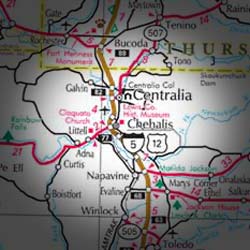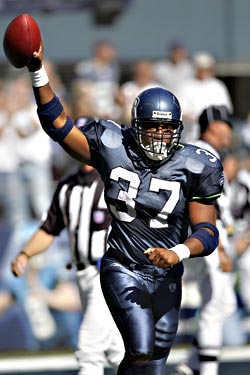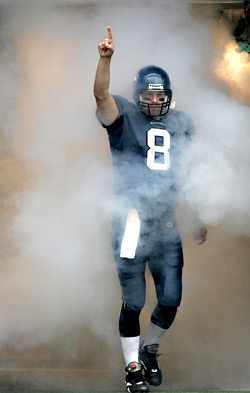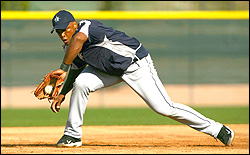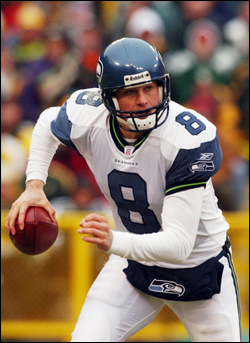Reading so much lately about the financial hardships endured by National Basketball Association franchise operators Howard Schultz and Paul Allen has been nearly too much to bear. Allen’s tear-dabbers have told Oregon pols that their boss might lose $100 million during a three-year span because Mercer Island’s best-known Seahawks cheerleader can’t make a go of it at the Rose Garden Arena, where his Portland Trail Blazers labor in vain. Closer to home is Schultz. The Starbucks java jiver and his backup investors want the state, city, county, port authority, school board—any kind of political entity would do—to find a way to help the Seattle SuperSonics not lose money. Whispering has commenced about the prospect of both franchises winding up elsewhere, perhaps in Kansas City, Wichita, Albuquerque, or the Dumpster.
Far be it from a mere mortal to propose solutions when two of the richest non-Dubai-based businessmen cannot solve their sports-ownership problems. But here are a few modest proposals that could keep basketball in the Pacific Northwest for months, if not years, to come:
1. Merger. Starting next season, the Seattle and Portland clubs could combine resources and play as one team: the SeaPort SuperBlazers, perhaps, or the West Cascade TrailSonics. Home games could be played halfway to Portland on Interstate 5, in a gymnasium in Centralia or Chehalis. Most school gyms can easily handle the kinds of crowds the Allen and Schultz teams have been drawing. Many fans from both the Seattle and Portland areas could commute to games via Amtrak. This would save them money because such train tickets actually cost less than parking near the Rose Garden or Seattle’s KeyArena. Plus, the 90-minute railroad commute to games would be a breeze compared with the two hours it presently takes to, say, drive from Bellevue to Lower Queen Anne for a Sonics game. Another advantage: Combining the roster talent of the two teams might result in an NBA team that could place as high as third in the league’s Northworst Division.
2. Rule change. Everybody seems to lament how NBA games never really get started with any intensity until the fourth quarter. Actually, games don’t really seem to “start” in a competitive sense until the final few minutes. The fix: Start games by playing three eight-minute quarters. The fourth quarter could be six minutes long. That way bored fans would only have to sit through 24 minutes of mailed-in “performances” instead of the current 36 before getting to the game’s denouement. We know: That would mean cutting total game time from 48 minutes to 30. This poses another opportunity:
3. Rollbacks! Because players would have games reduced to five-eighths of what they are now, salaries would be cut back commensurately. Example: A third-string NBA center currently being paid, say, $14 million a year, would only make $8.75 million. This would pose financial hardship on the player, but fans would gain. Instead of paying $150 for a 25th-row corner seat, fans would get it for just $93.75. That would leave plenty of money for buying $12 beers, assuming a Centralia or Chehalis school could get a liquor license.
4. Trend-setting. If successful, a Schultz-Allen partnership could lead to other NBA abbreviations. Anybody for the L.A. Clip-Lakes? New York Knick-Nets? Eventually, there could just be a half-dozen regional teams. The next move would be to have most viewers see the games on pay TV only. It would be something like the idea of onsite “luxury boxes,” which Schultz says KeyArena needs to add. But think about it: Most folks who can afford paying tens of thousands of bucks annually for onsite luxury boxes probably already have home-video rooms nicer than anything Jack Warner or Louie Mayer ever imagined. Schultz, Allen, and other NBA owners could simply assess subscribers with pay-per fees, and taxpayers would never again have to hear about the need to upgrade the gymnasium.
